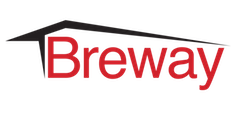
020 8531 5656
info@breway.com
Why Wind Energy Is Powerful
During the 2008 election campaign, Americans became aware of the need for clean energy and there was a sudden interest in wind and solar power. In 2010, the discussion hit the national consciousness again after the BP Gulf oil spill. In 2011, the wind industry has experienced growth, but it continues to be a question mark for consumers who don’t know much about it.
What matters isthat wind industry associations and experts use public awareness campaigns to promote consumer knowledge of wind power and howto invest in this form of clean energy.
On June 1, 2011, the American Wind Energy Association issued a pressrelease regarding wind experts testifying before Congress There is renewed interest in howwind installations will affect wildlife and the environment, especially endangered bald eagles. Consumers can read more at this link: awea.org/newsroom/pressreleases/Wind-energy-leaders-testify If you have not considered the implications of wind installations under development in your state, such as the impact on wildlife, now is a good time to think about it. Start by foil owing the development of legislation in Washington, D.C., that will shape a new decade of wind industry development.
Wind energy is a renewable resource just like solar energy. Here are some things that consumers should know about wind energy:
1. Homeowners must be willing to make an upfront investment in a wind turbine system. You can hire a wind contractor to install a small turbine on the roof of your home or erect a small wind tower. Over several years, you can recover the upfront costs through energy-bill savings.
2. You can sell some electricityto a local electricity company or community-based energy cooperative. That means that your household doesn’t just enjoy savings on the energy bill. How does it work? Your home wind turbine system might collect and store more energy than your household can use. Find out about local waysto sell wind energy before investing in wind technology.
This article was written by admin